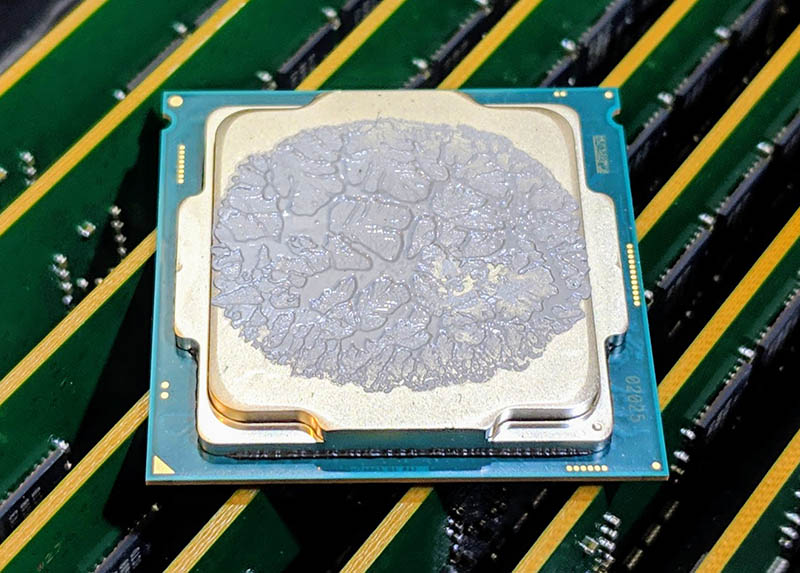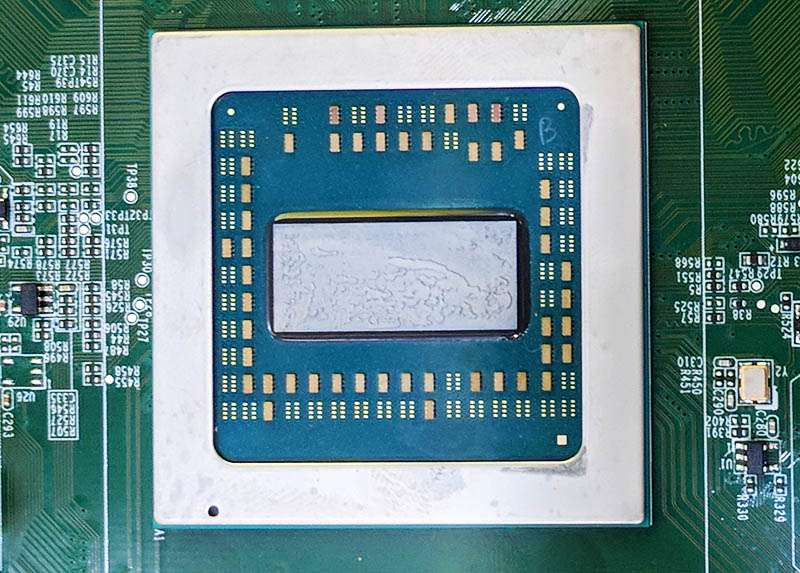Intel Atom C3758 Market Positioning
Thes chips are not released in a vacuum instead, they have competition on both the Intel and AMD sides. When you purchase a server and select a CPU, it is important to see the value of a platform versus its competitors.
Intel Atom C3758 v. Intel Alternatives
Comparing generation on generation, the Intel Atom C3758 is such an enormous improvement over the Atom C2000 series that there is no real competition from the older parts. The generational improvements are simply too great and too widespread.
Chips like the Intel Core i3-8100 offer an intriguing alternative but with the Core i3 and Intel Xeon E-2100 series, power consumption is significantly higher. One does get a GPU and that would be the tradeoff for moving up the power consumption SKU stack. Packaging sizes of the LGA1151 CPUs are also much larger which is important in the embedded space. In terms of RAM and expandability, the Intel Atom C3000 has a greater capacity which is another consideration.

The Intel Xeon D-2100 series is faster, but the power consumption is substantially higher. If your embedded application can take a node that uses twice as much, or more, power, then this is a good option. One area that the Intel Xeon D-2100 series excels in is that it uses the same Skylake instruction set as mainstream Skylake-SP CPUs. That means one can have the same core instruction sets both in the data center and at the edge.
There is competition, but the Intel Atom C3758 fills a unique place in the Intle SKU stack which cannot be said about all of Intel’s parts.
Intel Atom C3758 v. AMD Alternatives
At the time of this writing, the real AMD competition to the Intel Atom C3758 is the AMD Opteron X3421. The AMD Opteron X3421 has the benefit of having higher clock speeds, lower cost, and an integrated GPU. On the other hand, the Intel Atom C3758 offers more performance, is more expandable, has QAT, and uses less power. On balance, if you do not need a GPU the Intel Atom C3758 is better. You can read more about a use case that favors the AMD Opteron X3421 in our HPE ProLiant MicroServer Gen10 Review.

The AMD EPYC 3000 series is a higher TDP SKU that costs more. We do not see these as direct competitors. You can read about that in our AMD EPYC 3251 Benchmarks and Review.
Intel Atom C3758 v. Arm Competition
This is coming. Intel and the rest of the industry know it is coming. Currently, the main issue that Arm competition faces is the fact that many of the products in this class are not fully SBSA compliant and do not install vanilla operating systems without at least some work whether from drivers or other areas.
This will change as we move into late 2019 and into 2020. Then again, the Intel Atom C3000 series is an August 2017 product line so the fact that there are still advantages today shows that Arm is perhaps on the cusp, but not quite there yet.
Final Words
Overall, the Intel Atom C3758 performed extremely well for us. If you are building an embedded storage appliance, this offers something that is compelling, especially over previous-generation Intel Atom C2000 parts. The market in this space will start heating up over time, but the 8-core model has a nice balance of performance and power efficiency if you do not need the additional clock speed beyond 2.2GHz on the lower power cores.




Thank you for that article John, two comments:
1) I wouldn’t consider the Xeon D-21xx series of chips competition to the C3xxx series Atom line. They are well differentiated (hardware capabilities, power consumption, price). A better comparison are the lower-power offerings in the D-15xx Xeon series whose attributes overlap significantly with the Atom C3xxx series.
For example, I find the Xeon D-15xx Flex ATX boards from Supermicro the ones to beat when it comes to building a relatively future-proof storage-centric server. SuperMicro offers a variety of CPUs and board component choices while also offering two PCI3.0 x8 slots, a PCI3.0 x4 NVME interface, dual SATADOM ports, oodles of RAM capacity, optional LSI SAS, SFP+, 10GBe copper, etc.
2) I wish that ServeTheHome offered a synthetic benchmark test that took a FreeNAS or similar SOHO platform and benchmarked it with a couple of use cases – i.e. transfer speeds with 1-10 users.
For example, it would be great to know if the 2-Core Pentium 1508 may be a better CPU for a SMB/CIFS SOHO application than a higher-core D-15xx competitor. It’s peak clock speed is higher and some protocols like SMB/CIFS are single-thread. Other users may be interested in transcoding/streaming benchmarks, virtualization, and so on.
Patrick has described an amazing lab environment, it would be great if STH could put all those CPUs to work hammering a server test subject with demands for content, attempts to write, etc. Conversely, if creating a benchmark is not going to happen, how about explaining how to extrapolate to real-life scenarios such as maximum 10GBe performance,?
@ Constantin, I agree with you some realworld benchmarks would be helpfull.
But you could kinda extrapolate the answer you are looking for from the syntetics.
I came to the conclussion that the C3758 would probally not be able to get close to 10gbe(with nvme or ssds) but I am currios if I was right or even close.
There are not a lot of information about cpu and boards for server use compaired to gpus and cpus.
Heck even plain rgb stuff gets more reviews then server stuff.